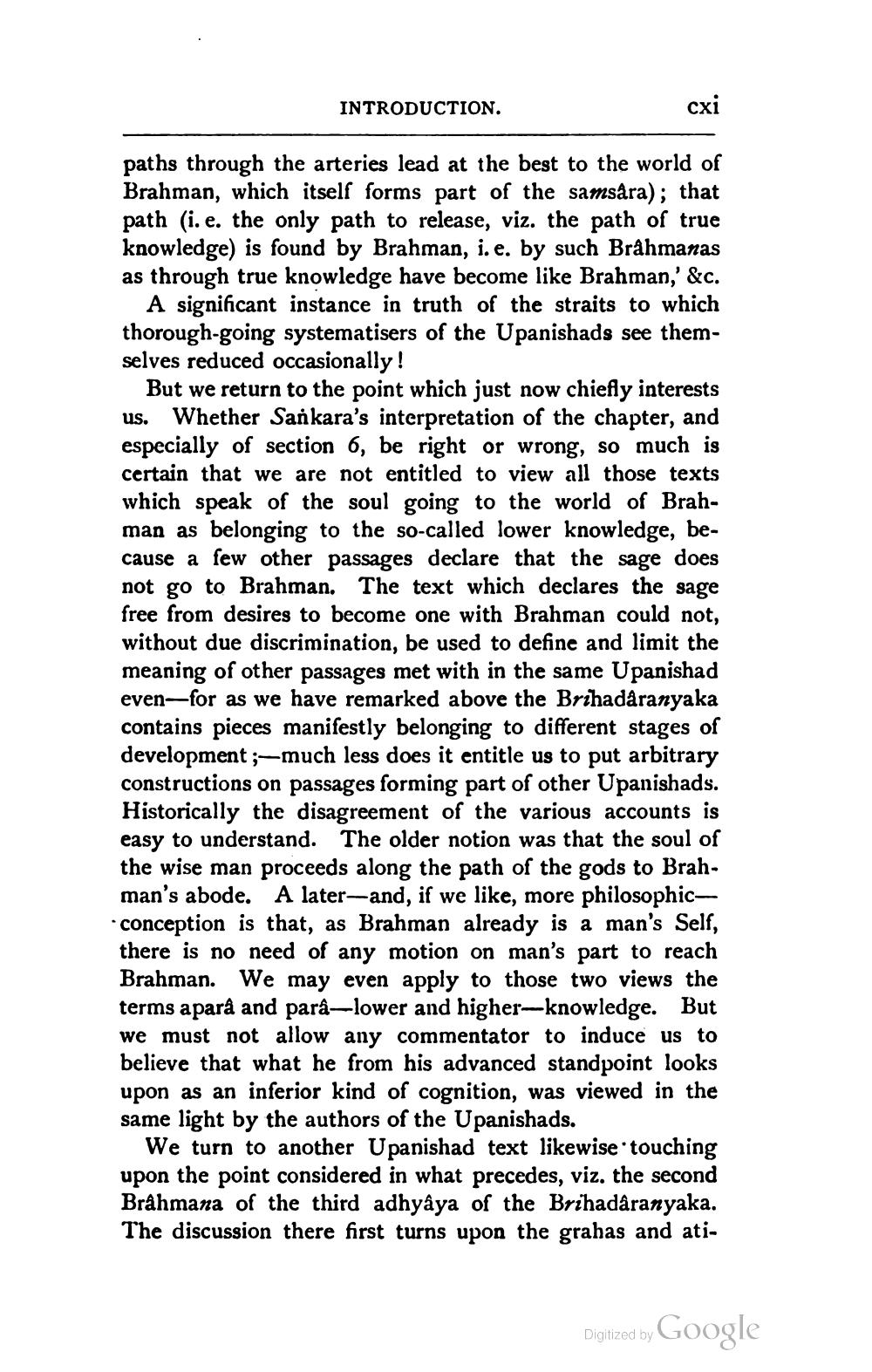________________
INTRODUCTION.
cxi
paths through the arteries lead at the best to the world of Brahman, which itself forms part of the samsára); that path (i. e. the only path to release, viz. the path of true knowledge) is found by Brahman, i.e. by such Brâhmanas as through true knowledge have become like Brahman,' &c.
A significant instance in truth of the straits to which thorough-going systematisers of the Upanishads see themselves reduced occasionally!
But we return to the point which just now chiefly interests us. Whether Sankara's interpretation of the chapter, and especially of section 6, be right or wrong, so much is certain that we are not entitled to view all those texts which speak of the soul going to the world of Brahman as belonging to the so-called lower knowledge, because a few other passages declare that the sage does not go to Brahman. The text which declares the sage free from desires to become one with Brahman could not, without due discrimination, be used to define and limit the meaning of other passages met with in the same Upanishad even—for as we have remarked above the Brihadaranyaka contains pieces manifestly belonging to different stages of development;-much less does it entitle us to put arbitrary constructions on passages forming part of other Upanishads. Historically the disagreement of the various accounts is easy to understand. The older notion was that the soul of the wise man proceeds along the path of the gods to Brahman's abode. A later-and, if we like, more philosophicconception is that, as Brahman already is a man's Self, there is no need of any motion on man's part to reach Brahman. We may even apply to those two views the terms aparâ and para-lower and higher-knowledge. But we must not allow any commentator to induce us to believe that what he from his advanced standpoint looks upon as an inferior kind of cognition, was viewed in the same light by the authors of the Upanishads.
We turn to another Upanishad text likewise touching upon the point considered in what precedes, viz. the second Brahmana of the third adhyâya of the Brihadaranyaka. The discussion there first turns upon the grahas and ati
Digitized by Google




